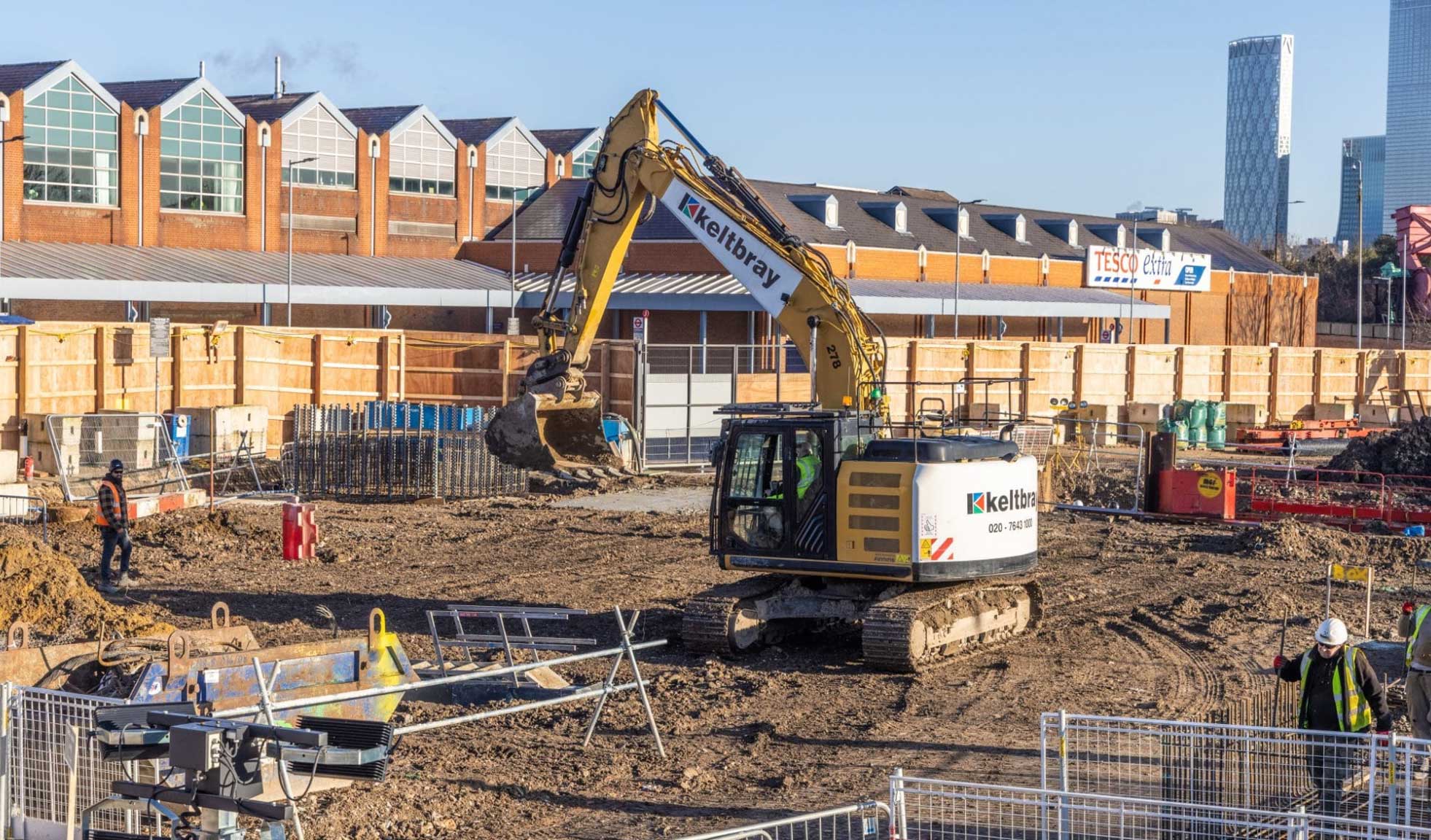Plot C within the Canada Water masterplan, designed by Allies and Morrison, will be among the first projects in the UK to use Earth Friendly Concrete (EFC) on the permanent work’s structure, saving 240 tons of carbon emissions. Alongside British Land, Keltbray and Merlango, we have been working to deliver this project within BL’s new Canada Water Masterplan.

The recent emphasis on climate change has shifted the perspective of engineers, to acknowledge that environmental impacts and associated carbon emissions are just as important as structural performance.
However, the limitations within the current design codes have, up till now, not aided the introduction of low carbon concretes such as Wagner’s Earth Friendly Concrete (EFC), as the codes of practice essentially do not allow innovative, greener concretes to be made available to the market as current standard mixes designs are.
EFC is concrete that has zero ordinary Portland cement (PPC) content. Instead, EFC uses a geopolymer binder system made from the chemical activation of blast furnace slag (GGBS) and fly ash (PFA). Therefore, the codes of practice require that the performance of this concretes be demonstrated, via dedicated material testing on the specific mix proposed from a dedicated batching plant and its constituent aggregate supply chain.
We have been developing framework specifications and testing programme for new concretes for a while now and were delighted to translate this into practice for the Canada Water project, where EFC has been validated and adopted for the permanent piles. We also anticipate its use in the pile caps and capping beams.
Comparative data of EFC to a typical UK 50% GGBS mix concrete indicate the embodied carbon per unit weight of EFC is approximately halved in comparison and less than a third for a standard OPC mix. In the piles alone, this has saved 240 tons of CO2 compared to a relatively green 50% GGBS mix.
We now have a significant amount of material data and knowledge of its behaviour on-site benefiting many future projects. The permanent foundations at Plot C are being installed as part of a site-wide enabling package where piling work commenced in November 2020, and the building above will be constructed sometime in the future. But we intend to explore the wider use of EFC on other plots at Canada Water with British Land in the short-term to continue where Plot C has started.
Philip Tait, Head of Development for Canada Water at British Land, said: “We are delighted to support this innovative, low carbon concrete. As part of our new sustainability strategy launched last year, we’ve committed to achieving a net-zero carbon portfolio by 2030 with a focus on reducing embodied carbon in our developments, and this is an important initiative in helping us reach this target. AKT II and its partners have been brilliant to work with and we look forward to exploring further opportunities with EFC across our Canada Water development.”